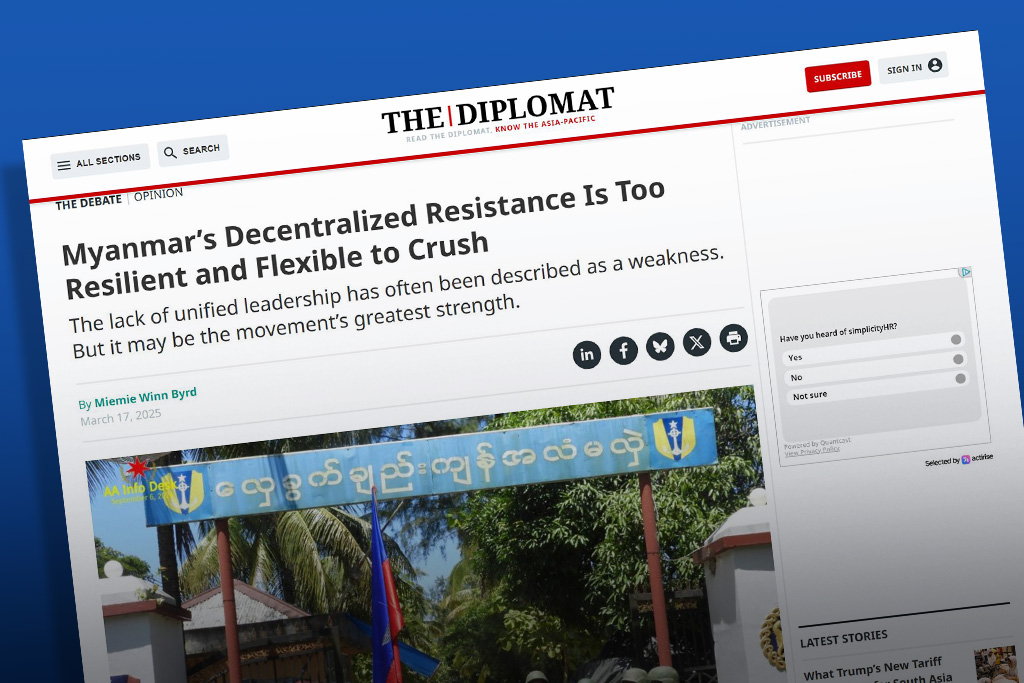In her recent article in The Diplomat, “Myanmar’s Decentralized Resistance Is Too Resilient and Flexible to Crush,” Dr. Miemie Winn Byrd examines the unexpected durability of Myanmar’s resistance movement against the military junta. Contrary to past uprisings in 1988 and 2007, which were swiftly suppressed, the current resistance has not only endured but has also forced the military into a defensive stance. By late 2023, coordinated offensives by ethnic armed organizations (EAOs) had significantly weakened the junta’s strategic position, leading resistance forces to advance toward the capital, Naypyidaw, by 2024.
According to Byrd, this resilience is attributed to the movement’s decentralized and adaptive structure. Operating without a unified command, various groups—including People’s Defense Forces (PDFs), EAOs, local militias, and the National Unity Government (NUG)—function semi-independently yet share intelligence, resources, and a common goal: overthrowing the junta and establishing a federal democracy. She likens this organization to a “school of fish,” where the lack of centralized leadership becomes a strategic advantage, making the movement difficult to suppress with a single decisive action.
The article highlights that this fluid and decentralized approach not only sustains the resistance’s momentum but also mitigates external manipulation from major powers like China. The resistance’s adaptability and shared objectives have transformed perceived disorganization into strategic strength, challenging the junta’s ability to maintain control over vast territories.











Leave A Comment